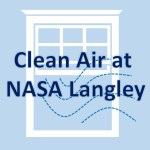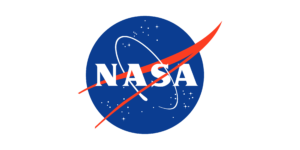Air Quality
The Clean Air Act (CAA) of 1970 was enacted by Congress to protect air quality in the
United States. The CAA is implemented through air pollution laws administered and
enforced by the U.S. Environmental Protection Agency (EPA). However the EPA has
largely delegated the task of administering air pollution laws to the States. The Virginia
Department of Environmental Quality (VDEQ) administers the requirements of the
Federal Clean Air Act in Virginia and enforces the State’s air pollution laws and
regulations.
The VDEQ issues permits, conducts inspections, and performs monitoring to ensure that air discharges comply with state and federal standards. The agency also oversees NASA LaRC’s monitoring and conducts inspections on-site to ensure that the Center’s air emission sources meet permit requirements.
Air Permits 101
The air permit system is the method used to regulate and enforce air pollution laws and
regulations. The Clean Air Act Amendments (CAAA) established a permit program for large sources that release pollutants into the air.
The national permit system mandated by the EPA is called the Title V Operating Permit Program. Under this program, air permits are issued by the State, or if the state fails to carry out the CAA satisfactorily, by the EPA. The essential concepts of the air permitting system include:
- Potential to Emit – Potential to emit is the maximum physical and operational
capacity of a source to emit any air pollutant. This potential is based on yearround,
24 hour per day operation, but does take into account restrictions and
controls on the facility that are state and federally enforceable. - Applicable Requirements – Both the state and federal operating permit programs
serve as vehicles for identifying all requirements applicable to a source. These
can include compliance, record keeping, reporting, emission controls, emission
limits, work practices, operating hours, and other matters stemming from federal
and state air laws and regulations as well as permits for constructing or modifying
a facility. - Synthetic Minors and Potential to Emit – A source can avoid the requirements of
a Title V permit if it can keep its potential to emit below the thresholds in the Title
V definition of a major source. Synthetic minor sources agree to abide by
emissions or operational limits that keep the source below the major threshold. A
synthetic minor source will not be a Title V major source as long as the emission
limits are enforceable through the state operating or modified source permits.
LaRC is a synthetic minor source.
VDEQ administers the state’s air Operating Permit Program. The goal of the Operating Permit Program is to require every facility to have one comprehensive permit for all air pollution sources in that facility. The permit includes information on which pollutants are being released, how much may be released, and what steps are being taken to reduce emissions, including the monitoring of air emissions.
Hampton Roads Air Quality Control
NASA LaRC is located within the Hampton Roads Intrastate Air Quality Control Region
(AQCR). This AQCR is currently designated as an attainment area for all of the criteria
pollutants. Previously, the Hampton Roads area had been designated as a “marginal
non-attainment” area for the 8-hour ozone standard. In October 2006, VDEQ formally
submitted a request to EPA to redesignate the Hampton Roads Area from
nonattainment to attainment of the 8-hour NAAQS for ozone. The request included
three years of complete, quality-assured data for the period 2003-2005, indicating that
the 8-hour NAAQS for ozone had been achieved in the Hampton Roads Area. On June
1, 2007 (72 FR 30490), EPA published a final ruling that redesignated the Hampton
Roads area from a “marginal nonattainment” area to an attainment area. On October
29, 2008 (73 FR 64210), EPA published a final ruling that approved a revision to the
Virginia SIP that established the Hampton Roads area as an Ozone Maintenance Area
on the list of maintenance areas found in regulation 9 VAC 5-20-203.
LaRC’s Air Permit
 A Federal Title V Operating Permit is not required by the Center. LaRC qualifies as a synthetic minor because its air emissions are limited below the prescribed thresholds by its state operating permit. The major components of the Center’s air permit are the Center-wide emissions limits, the air emissions sources regulated under the permit, and the conditions placed on these sources to ensure air emission limits are met. The Center’s air permit limits both emissions from individual air pollution sources and facility-wide emissions.
A Federal Title V Operating Permit is not required by the Center. LaRC qualifies as a synthetic minor because its air emissions are limited below the prescribed thresholds by its state operating permit. The major components of the Center’s air permit are the Center-wide emissions limits, the air emissions sources regulated under the permit, and the conditions placed on these sources to ensure air emission limits are met. The Center’s air permit limits both emissions from individual air pollution sources and facility-wide emissions.
Emission Source Conditions
The air permit contains enforceable conditions that limit the quantity of air pollutants that
LaRC may emit. Specific permit requirements vary according to the air pollution source,
but they generally include physical, operational, record keeping and reporting
requirements. Physical requirements include control equipment to limit emissions such
as low NOx burners on boilers and filters on paint booths and monitoring equipment
such as meters and thermometers to measure emissions or process rates. Operational
requirements include limits on the amount and type of fuel burned or materials
processed, the frequency and duration of operations, and the types and amounts of
product that can be used, such as paints and solvents. Monthly record keeping requirements include documentation that physical and operational requirements are met, records of the quantity of products, fuels and materials used, records on the frequency and duration of operations, and monthly emissions from each source. Reporting requirements include Semi-Annual Fuel Reports, an annual inventory update, and biennial emission statements.
Frequently Asked Questions and Information
REFERENCES
Virginia Department of Environmental Quality, Air Quality Information
U.S. Environmental Protection Agency, AirData Website

